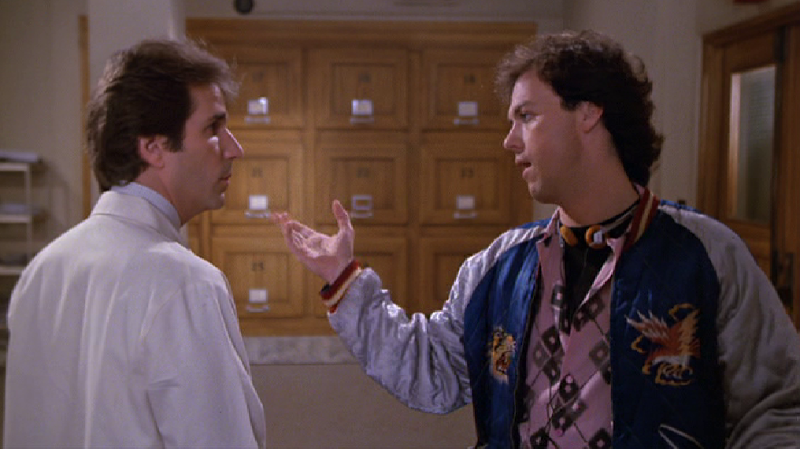With X-Men (2000), Bryan Singer helped revitalize the comic book
superhero movie after Batman and Robin
(1997) turned off mainstream audiences and Hollywood studios alike from the
genre. It proved that people would go see this kind of movie if it were
well-made. While X-Men, based on the
Marvel comic book of the same name about a team of mutated human beings born
with their own unique super powers, had its flaws, it showed promise, which
Singer capitalized on with its vastly superior sequel X2 (2003). After its impressive commercial and critical success, 20th Century Fox naturally wanted him to direct another one, but he decided to jump
ship to the DC Universe and make the ill-fated Superman Returns (2006). The X-Men
franchise continued on without him until the prequel First Class (2011) (which he helped produce) convinced him to
direct another one (that, and I’m sure the financial flop of Jack the Giant Slayer). Loosely based on
the 1981 Uncanny X-Men storyline of
the same name by Chris Claremont and John Byrne, Days of Future Past (2014) ambitiously features cast members from
all four previous X-Men movies.
In an alternate future, the
world has been ravaged by a destructive war between humans and mutants. Giant
robots known as Sentinels have driven the mutants underground and to the brink
of extinction, forcing them to band together, even Professor X (Patrick
Stewart) and Magneto (Ian McKellen), who have a wildly disparate worldviews.
Singer effectively sets up this bleak futureworld with an exciting action
sequence that sees a group of Sentinels kill off several mutants with brutal
efficiency.
Professor X and Magneto
devise a desperate plan to prevent their future by stopping the Sentinels from
being created. To do this, they decide to send Wolverine (Hugh Jackman) back to
1973 to stop Mystique (Jennifer Lawrence) from killing Bolivar Trask (Peter
Dinklage), designer of the Sentinels, which kickstarts the creation of said
robots. It won’t be easy as Professor X (James McAvoy) and Magneto (Michael
Fassbender) are at bitter odds with each other. Mystique, once an ally of the
former, now sides with the latter. Wolverine must bring Professor X and Magneto
together and convince them to stop Mystique from killing Trask.
Singer manages to
successfully wrangle a large and diverse cast of characters without confusing
the audience or overwhelming them. Hugh Jackman returns yet again as Wolverine
and plays him as a slightly calmer guy who must maintain focus and keep his berserker
rage in check in order to stay long enough in the past to complete his mission.
James McAvoy is good as a self-pitying burn-out who has lost his direction
life. Professor X takes drugs to keep his powers submerged and has to find
something to care about again. Michael Fassbender does a nice job of
incorporating elements of Ian McKellen’s Magneto yet still make the character
his own. The scenes he has with McAvoy are infused with tension as the two
men’s opposing worldviews clash. They must find some kind of common ground,
some kind of reconciliation if only temporarily.
Jennifer Lawrence plays
Mystique as a ruthlessly driven mutant fighting a war that was started by
Magneto, but one that she continues in his absence because she is tired of
seeing her kind tortured and killed out of fear and intolerance. Peter Dinklage
is quite good as Trask, a man who believes that mutants will make humanity
extinct and has the conviction of someone who thinks he’s right. Like any
formidable villain, he doesn’t see himself as such, believing he is completely
justified in what he does. Singer’s presence clearly inspired everyone to bring
their A-game and there is nary a bum note among the cast. He wisely knows
exactly when to bring certain characters center stage for their chance to shine
in a way that feels satisfying. A minor quibble is that with the exception of
Jackman, most of the original cast are given glorified cameos with an emphasis
on the First Class characters.
This is easily the most
ambitious X-Men movie to date as it
goes back and forth in time and spans several countries while juggling a
sizable cast of characters. It is great to see Singer back at the helm as he
brings a stylish pizazz that was missing from The Last Stand (2006) as evident with a slick, amusing sequence
where Wolverine, Professor X, the Beast (Nicholas Hoult) and Quicksilver (Evan
Peters) break Magneto out of the Pentagon all scored to Jim Croce’s 1973 hit
“Time in a Bottle.” It’s a virtuoso sequence that showcases Evan Peters’
scene-stealing turn as a lightning fast mutant and gives the movie a much-needed
dose of levity amidst the prevailing serious tone.
In many respects, Days of Future Past thankfully pretends
that The Last Stand never happened
(touching upon it only briefly) and feels like not only the logical conclusion
of First Class, but also X2. Simon Kinberg’s screenplay does a
nice job of showing how the mutants’ exploits affect history and in turn how it
affects them. It also manages to successfully raise the stakes on an epic scale
from any previous X-Men movie while
keeping us invested by showing the personal dilemmas that several key
characters face, from Professor X learning to control his powers to Mystique
learning to be more tolerant of the human race. Singer expertly orchestrates
the various story elements, guiding the movie to an impressively staged climax
in both future and past timelines that provides the requisite show-stopping CGI
workout, but one that feels deserved and never excessive (unlike, say Man of Steel). He has made what is
easily the best X-Men movie since X2 and maybe even better than that one.

















.jpg)
.jpg)





